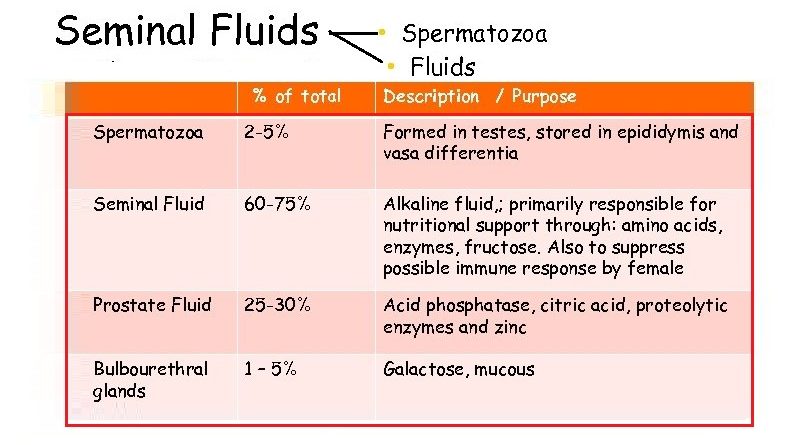Seminal Fluid: More Than Just a Swimming Pool for Sperm
Most people believe that seminal fluid, also known as semen, sole purpose is to provide a medium for sperm cells to swim in, but it is more than that. It is an organic bodily fluid that is emitted from the male reproductive tract and contains sperm cells capable of fertilizing the female’s eggs. It is a complex mixture of sperm cells, proteins, and other molecules that work together to keep the sperm cells viable and to ensure successful fertilization. (SOURCE) In this article, we will explore the components and functions of seminal fluid.
Components of Seminal Fluid:
Seminal fluid is composed of a variety of components that work together to provide an optimal environment for sperm cells. These components include:
- Sperm cells:
The primary purpose of seminal fluid is to transport and protect sperm cells. Seminal fluid provides an environment where sperm cells can swim freely and reach the female reproductive tract. - Seminal plasma:
This is the fluid portion of the seminal fluid that provides the necessary nutrients and energy for sperm cells. Seminal plasma contains fructose, enzymes, vitamins, and minerals that provide energy and nutrition for sperm cells.
The portion coming from seminal vesicles is rich in fructose, a sugar that provides nutrients for sperm cells, as well as other proteins, enzymes, and mucus. This fluid is a major component of semen and accounts for about 50%–80% of semen volume. (2) - Prostaglandins:
These are hormone-like substances that help to dilate the cervix and stimulate uterine contractions. This helps to propel sperm cells towards the egg. - Antibodies:
Seminal fluid contains antibodies that help to protect sperm cells from the female’s immune system. These antibodies also play a role in protecting the developing embryo from infections.
Functions of Seminal Fluid:
The components of seminal fluid work together to perform several essential functions that are crucial for successful fertilization. These functions include:
- Protecting sperm cells:
It provides a protective environment for sperm cells, shielding them from the harsh conditions of the female reproductive tract. - Transporting sperm cells:
Seminal fluid helps to transport sperm cells from the male reproductive tract to the female reproductive tract, where fertilization can occur. - Providing nutrition:
It provides the necessary nutrients and energy for sperm cells to survive and swim towards the egg. - Enhancing sperm motility:
The components, such as prostaglandins, help to enhance sperm motility, making it easier for sperm cells to swim towards the egg. - Stimulating the female reproductive tract:
It contains substances that stimulate the female reproductive tract, making it easier for sperm cells to reach the egg.
SUMMARY
Seminal fluid is more than just a medium for sperm cells to swim in. It is a complex mixture of sperm cells, plasma fluid containing proteins, and other molecules that work together to ensure successful fertilization. Its components and functions are essential for the survival and successful fertilization.
SOURCES
1. britannica.com
2. verywellhealth.com
3. my.clevelandclinic.org
4. training.




